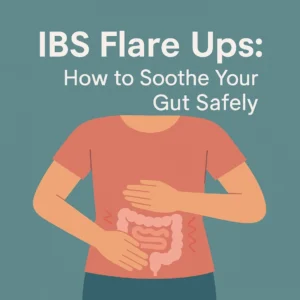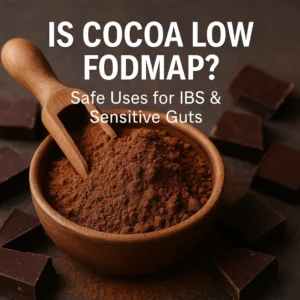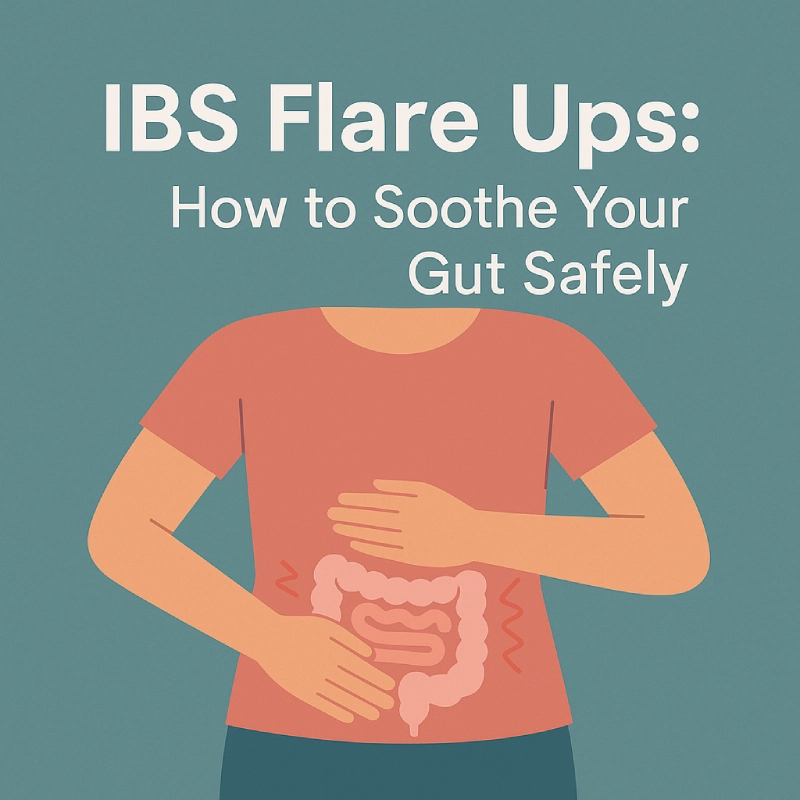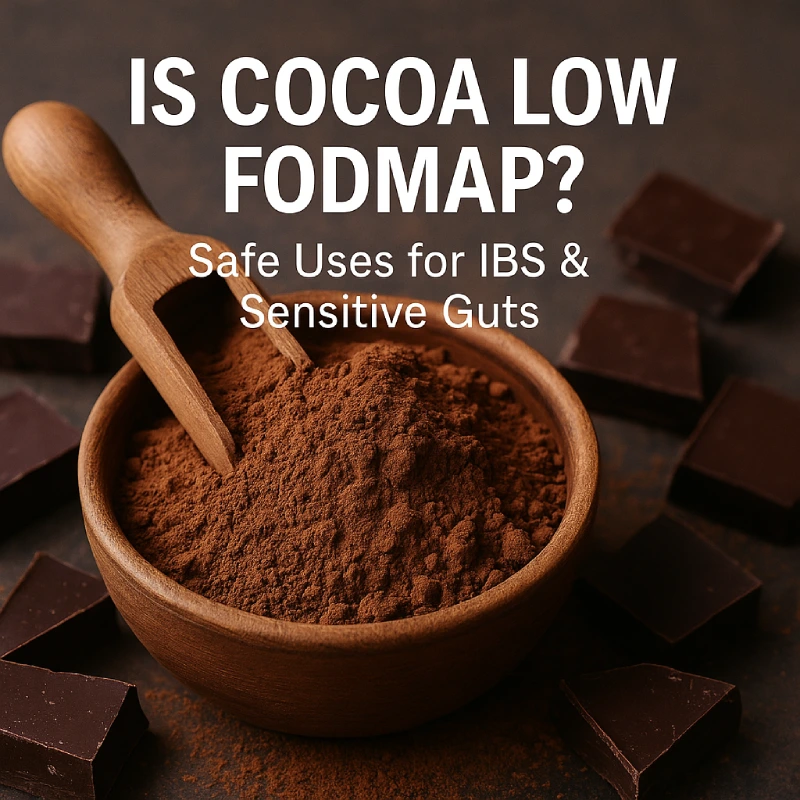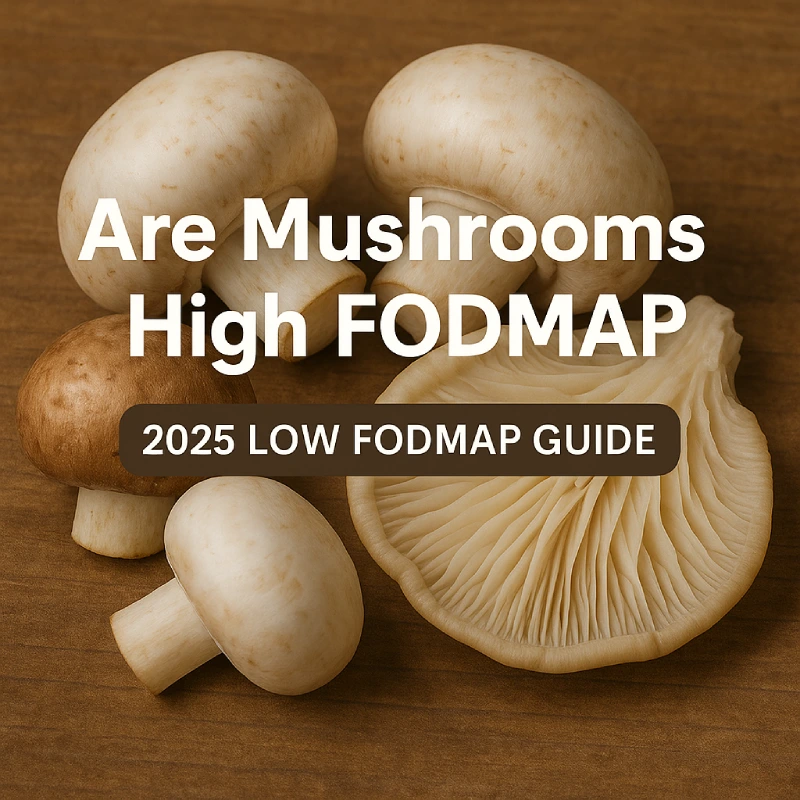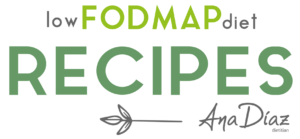Broccoli is one of those vegetables many people feel unsure about when starting the low FODMAP diet. Is it safe? Does it trigger symptoms? The answer is nuanced. Thanks to recent testing by Monash University, we now have clearer guidance. In this article, I’ll help you understand which parts of broccoli and broccolini you can enjoy, how to eat them safely, and what the science really says.
Table of Contents
Why Is Broccoli So Confusing on the Low FODMAP Diet?
When you begin a low FODMAP journey, broccoli can feel like a grey area. Some sources say it’s safe, while others warn against it. The reason? Not all parts of broccoli are the same.
The stalks, florets, and baby broccoli (broccolini) each have a different FODMAP composition. That means how your gut reacts depends not only on the portion size but also on which part you eat.
What Are FODMAPs in Broccoli?
FODMAPs are fermentable carbohydrates that can trigger digestive symptoms like bloating, gas, or abdominal pain in people with irritable bowel syndrome (IBS). In broccoli, the main FODMAPs are:
- Fructose (in excess over glucose)
- Fructans (particularly in stalks)
- Polyols (sorbitol and mannitol) in trace amounts
The balance of these varies depending on the broccoli part and serving size.
Broccoli Florets vs Stalks: What’s the Difference?
Broccoli Florets
Good news: broccoli florets are low FODMAP in moderate servings. Monash University testing shows:
- 75 g (about 1 cup) of florets are low in FODMAPs and generally well tolerated.
- Larger servings (over 180 g) can become high in excess fructose.
This means you can comfortably add florets to stir-fries, salads, or roasted vegetable dishes, as long as you stay mindful of quantity.
Broccoli Stalks
The stalks are more problematic. They are higher in fructans, a FODMAP group that is particularly fermentable.
- Up to 45 g (about ½ cup) of stalk is considered low FODMAP.
- Beyond this, fructan content increases and may cause symptoms.
This doesn’t mean you need to throw stalks away. Simply trim them down, use a small amount, and combine with florets for a more balanced serve.
What About Broccolini (Baby Broccoli)?
Broccolini is genetically a hybrid of broccoli and Chinese kale, and its FODMAP profile is slightly different.
- Stalks of broccolini are low FODMAP at 45 g (½ cup).
- Florets of broccolini are low FODMAP at 65 g (about ¾ cup).
However, larger amounts can become high in both fructose and fructans. This is why portion control is key.
Practical Tip
If you love broccolini, think of it as a side dish rather than the main feature on your plate. Pairing it with other low FODMAP vegetables (like carrots, zucchini, or spinach) helps you create a fibre-rich, colourful plate without overdoing FODMAPs.
Cooking and Preparation Tips to Reduce FODMAPs
How you prepare broccoli also matters. Cooking doesn’t eliminate FODMAPs, but it can make them easier to digest by softening fibres. Here are some gentle tips:
- Use florets more than stalks if you are in the elimination phase.
- Slice stalks thinly and mix small amounts into soups or stir-fries for added texture.
- Steam or roast broccoli rather than eating it raw, as raw cruciferous vegetables can be harder on sensitive tummies.
- Combine with low FODMAP foods like rice, quinoa, chicken, or fish for balance.
Is Broccoli Healthy Beyond FODMAPs?
Absolutely. Broccoli is packed with:
- Vitamin C (supporting immunity)
- Vitamin K (important for bone health)
- Folate (essential during pregnancy)
- Sulforaphane, a plant compound linked with anti-inflammatory and protective effects
This means that unless broccoli is a clear trigger for you, it’s worth keeping it in your diet in tolerated amounts. Remember: the low FODMAP diet is not about avoiding healthy foods forever, but about finding your personal tolerance.
Broccoli Reintroduction: What Science Says
Once you’ve completed the elimination phase of the low FODMAP diet, broccoli can be an excellent candidate for reintroduction. Because florets and stalks differ, you may want to test them separately.
- Start with florets in a moderate serving (e.g., 75 g).
- Increase portion gradually to test your tolerance.
- Move on to stalks if florets are well tolerated, introducing small amounts first.
This stepwise approach helps you understand whether your symptoms are triggered by excess fructose, fructans, or perhaps not at all.
FAQs About Broccoli and the Low FODMAP Diet
Can I eat broccoli on a low FODMAP diet?
Yes, in controlled portions. Florets are safer than stalks, and both are fine in moderate amounts.
Is broccolini the same as broccoli in terms of FODMAPs?
Not exactly. Broccolini has slightly different thresholds but the same rule applies: small portions are low FODMAP, larger portions are not.
Should I avoid broccoli completely if I have IBS?
Not necessarily. Many people tolerate florets well. Avoiding broccoli entirely may mean missing out on important nutrients.
What if I get bloated after broccoli, even in small amounts?
This may not always be about FODMAPs. Broccoli is high in fibre and contains sulphur compounds, which can cause gas even in those without IBS. Try smaller servings and different cooking methods.
How do I combine broccoli safely with other foods?
Pair it with low FODMAP staples like rice, quinoa, potatoes, carrots, or protein foods. Avoid combining with other high FODMAP vegetables in one meal.
Gentle Takeaway
Broccoli doesn’t need to be an enemy on your low FODMAP journey. With the right knowledge about portions and preparation, you can enjoy its flavour and benefits without fear. Remember that every gut is unique, so your tolerance may differ from someone else’s. Approach broccoli with curiosity, not restriction.
If you are unsure, it’s always best to work with a dietitian who specialises in FODMAPs. This way, you’ll learn how to personalise your diet while still nourishing your body fully.
Call to Action
If you’re navigating the low FODMAP diet and feel overwhelmed, you don’t have to do it alone. Reach out! I can guide you through reintroductions with confidence. Your journey with IBS doesn’t need to be about avoidance, it can be about discovery.


